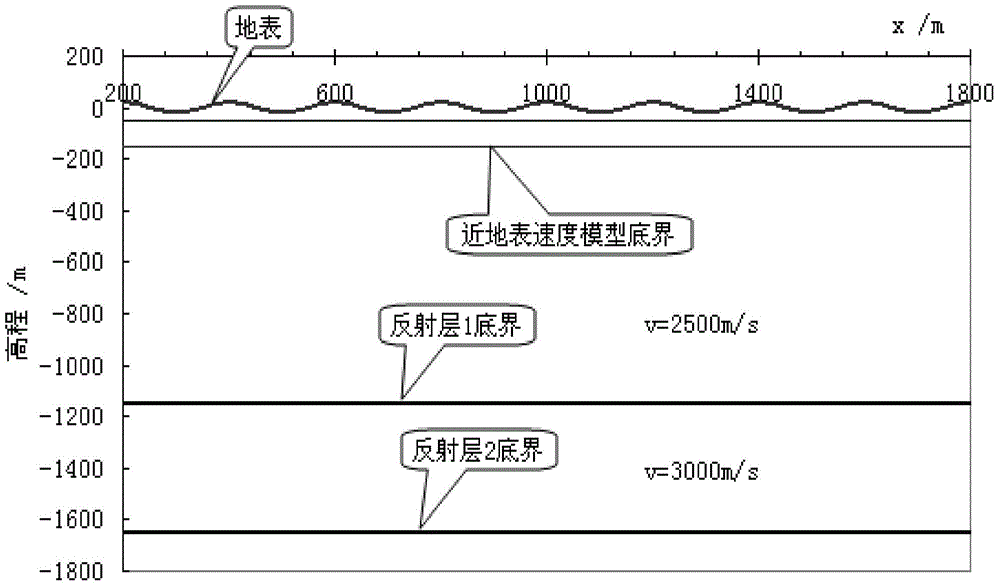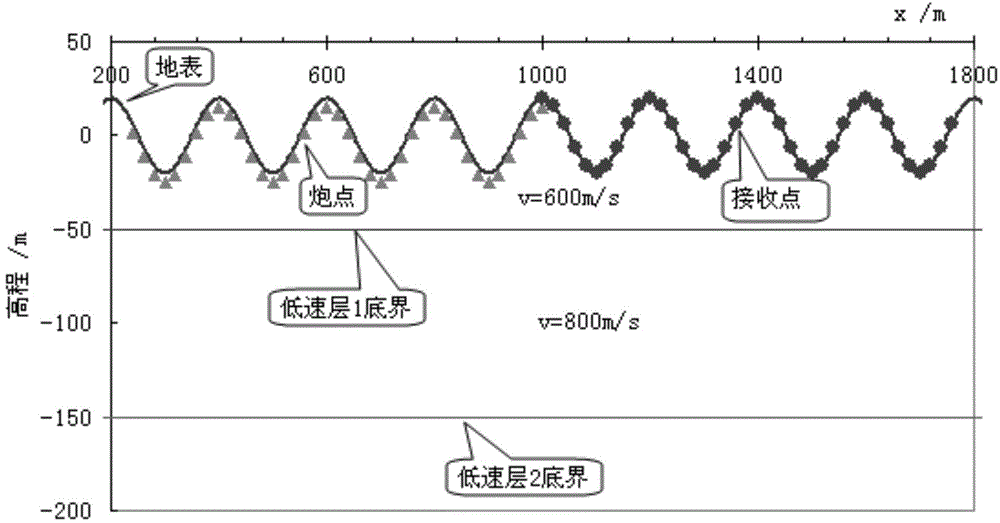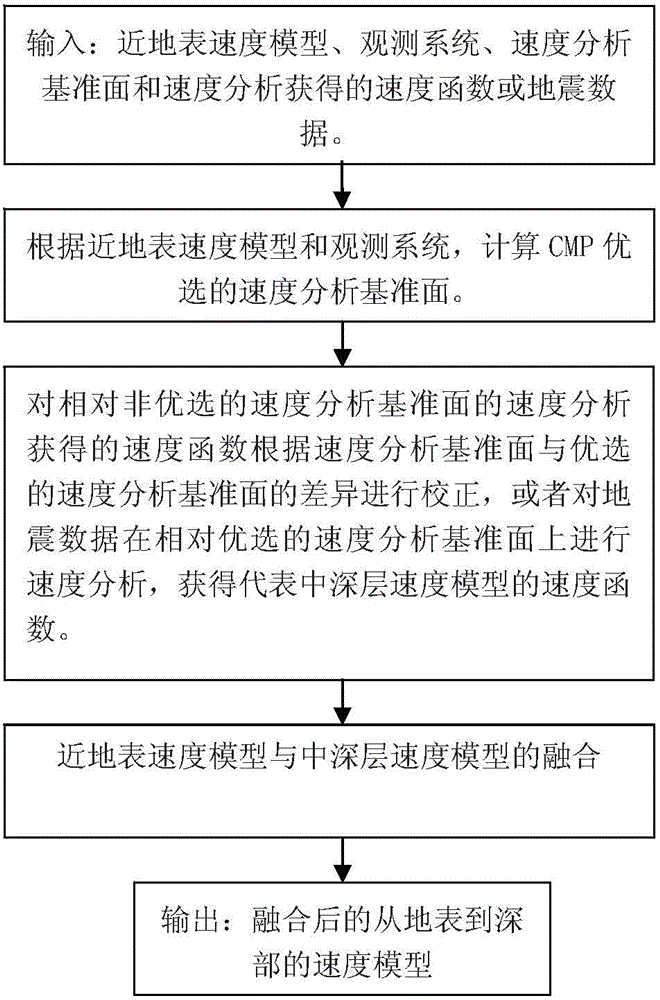Method for combining near-surface velocity model with middle-deep stratum velocity model
A technology of velocity model and fusion method, applied in the field of seismic exploration data data processing
- Summary
- Abstract
- Description
- Claims
- Application Information
AI Technical Summary
Problems solved by technology
Method used
Image
Examples
Embodiment approach 1
[0132] (1) Calculate the optimal velocity analysis datum elevation
[0133] According to the near-surface velocity model of each shot point and receiving point of CMP and the parameters of the observation system, the elevation of the reference plane for velocity analysis optimized by CMP is calculated. Firstly, use formula (1) to calculate the optimal velocity analysis datum elevation at the shot point and receiving point, and the offset distance is 2000m, and the sum of the thickness of the underlying high-speed formation and the thickness of the low-velocity zone is also taken as 2000m. The sum of the thickness of the underlying high-speed formation and the thickness of the near-surface velocity model is equal to the offset. The offset and the thickness of the underlying high-velocity formation have some influence but are not sensitive to the calculated preferred velocity analysis datum elevation.
[0134] Calculate the average value of the preferred velocity analysis datum...
Embodiment approach 2
[0146] (1) Calculate the optimal velocity analysis datum elevation
[0147] The method of calculating the preferred velocity analysis datum elevation of the CMP point is the same as that of Embodiment 1, and the preferred velocity analysis datum elevation of the CMP is -109m.
[0148] (2) Obtain the velocity function representing the medium-deep velocity model
[0149] In the second way, the velocity function in Table 2 obtained from the velocity analysis relative to the final datum plane is corrected. Formula (3) calculates the round-trip travel difference △t from the final datum to the preferred speed analysis datum 0 =-87.2ms. Using equations (4) and (5) to calculate the velocity function of the relatively preferred velocity analysis datum is shown in Table 9 (the velocity function obtained from the final datum velocity analysis is adjusted to the preferred velocity analysis datum (elevation-109m)). Directly use the Dix formula to convert to the depth domain, and obtain ...
Embodiment approach 3
[0159] (1) Calculate the optimal velocity analysis datum elevation
[0160] The method of calculating the elevation of the preferred velocity analysis datum level of the CMP point is the same as that of Embodiment 1, and the preferred velocity analysis datum level of the CMP is at the elevation -109m.
[0161] (2) Obtain the velocity function representing the medium-deep velocity model
[0162] In the third way, the velocity function in Table 2 obtained from the velocity analysis relative to the final reference plane is corrected by fitting the hyperbolic reflection time-distance curve. First determine the offset range, take the same offset as the model data, from 0m to 1520m, and the track spacing is 40m. Secondly, according to the two-way travel time and speed in the speed function of Table 2 obtained from the speed analysis relative to the final datum, the hyperbolic equation Calculate the time-distance relationship of each reflection layer; the third is to apply the sta...
PUM
 Login to View More
Login to View More Abstract
Description
Claims
Application Information
 Login to View More
Login to View More - R&D
- Intellectual Property
- Life Sciences
- Materials
- Tech Scout
- Unparalleled Data Quality
- Higher Quality Content
- 60% Fewer Hallucinations
Browse by: Latest US Patents, China's latest patents, Technical Efficacy Thesaurus, Application Domain, Technology Topic, Popular Technical Reports.
© 2025 PatSnap. All rights reserved.Legal|Privacy policy|Modern Slavery Act Transparency Statement|Sitemap|About US| Contact US: help@patsnap.com



